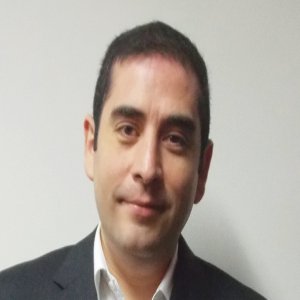Investment in Hightech, a Must of the Public Sector

STORY INLINE POST
Q: UCIN Médica has been operating for over 15 years. How has the market changed over this period?
A: One of the largest changes to have taken place over the last 15 years has been channel distribution. At that time, it was easier to have a distributor channel and we had exclusive distributors for each area of the country. Our profit margin was higher, which allowed us to have distributors everywhere in Mexico. Today, this business model is nearly obsolete. Competition has become too strong, prices have lowered, and profit margins have been reduced, which means that having several distributors is no longer economically feasible. Another problem is that public hospitals, such as IMSS, used to have local tenders divided by geographical areas but now they have centralized procedures, which also reduced their number of suppliers. Overall, I believe the main elements affecting the current Mexican market are the reduction of profit margins and the increase in competition from low quality foreign products.
Q: How is UCIN Médica different from other companies?
A: Our main distinguishing factor is the training we provide. Several of our products cannot be acquired without the necessary training, which means we must constantly educate our team, distributors, representatives, and users. This is done by having our product specialists for each area trained by the manufacturers themselves. Subsequently, we receive additional training from doctors that specialize in their respective fields. This step is necessary as, if our suppliers or manufacturers do not provide the required training, we must implement the training in-house. For example, one of our larger suppliers, Utah Medical Products, has never provided training for their products so we had to seek outside help. Sadly, there are not enough specialized individuals and resources in Mexico to provide the level of education needed. This area could certainly be improved.
Q: Who are your main clients and how would you define an ideal market for your products?
A: Around 90% of our sales are to other distributors and integrators. Since the country is too extensive to manage distribution on our own, we must create partnerships to sell to public and private hospitals. Therefore, we are seeking to forge alliances with integrators in order to keep promoting our brands within hospitals. After an integrator wins a bid with a hospital, we provide our partner with everything they need to supply the hospital and we work together to increase our visibility with potential clients. This ensures that doctors familiarize themselves with our brands, which may prompt them to request them in the future. If an integrator decides to use a different brand from ours, doctors and hospital administrators may even force them to switch to our brands. After this, around 10% of our sales are done directly to public institutions and a small amount to private hospitals. Our ideal market would be selling 50% to distributors, 30% to the private sector, and 20% to the public sector.
Q: What processes do you follow to promote products to your clients?
A: In most cases, manufacturers develop products and we promote them. However, as the medical devices market is constantly evolving, we continually have to look for new suppliers. For example, we attend conventions to find innovative equipment that we can readily incorporate into our business areas. We might also be negatively affected by M&As in which a larger company acquires a smaller firm we are already working with. To boost our reputation, we are interested in creating partnerships with associations within the industry. We are already members of the CAINTRA in Nuevo Leon and we participate in its training programs and events. At this point, we are not collaborating with universities but we are in discussions with a public university in Queretaro about a potential future collaboration.
Q: What strategies should public institutions adopt in the field of medical devices to assure public health?
A: Public institutions must steer clear of cheap products that may endanger their patients’ health. A real problem is that the government is spending its budget on equipment with a shorter lifespan, which will need to be repaired or replaced. The government does not take durability into account and more money is spent in the long-term. For that reason, it is extremely hard to release new and innovative products onto the market as they are generally more expensive. At this point, adding any product to the list approved for purchase by IMSS requires the support of the Ministry of Health.























